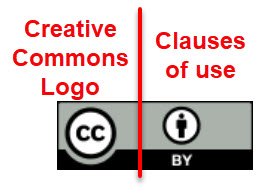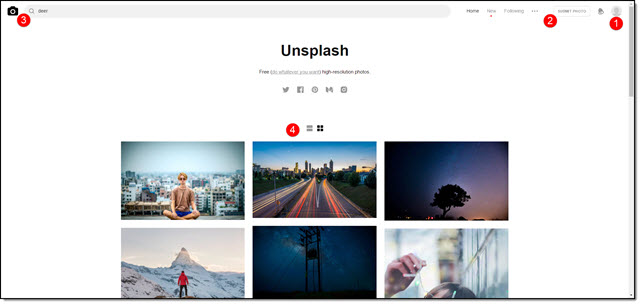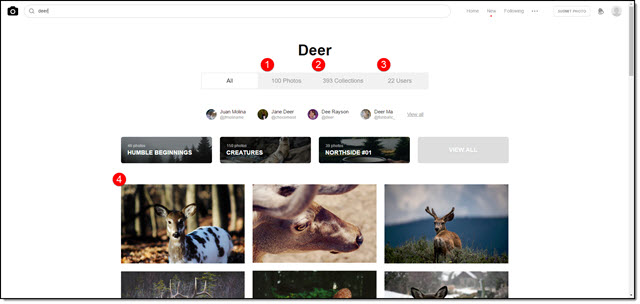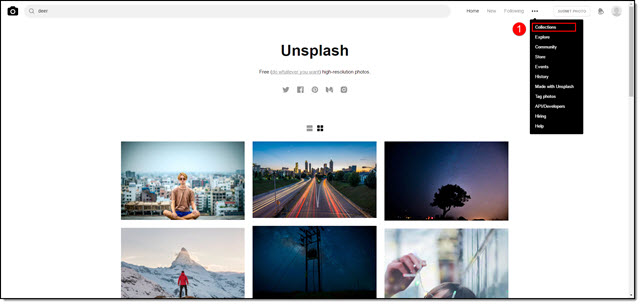The 7 Most Used Creative Commons Licenses

Creative Commons licensing is an important item to understand as “CC” licensed images are used often in presentations. I have found one of the large misunderstandings of many designers is that “Creative Commons” licensing does not always mean the image is free to use, free from attribution needs, and free to own. This is a very high level overview of Creative Commons and I am calling out the 7 most used Creative Commons licensing options.
Here are a few soundbytes of info, and as much detail into legal use, where to use, how to use I am including (eg. basically none):
- The best, short, definition of Creative Commons I found and like to use is: “Creative Commons (CC) is an American non-profit organization devoted to expanding the range of creative works available for others to build upon legally and to share.“
- Copyright is the exclusive legal right, given to the legal owner of the art piece to print, publish, perform, film, or record literary, artistic, or musical material, AND to authorize others to do the same.
- Copyleft is approval to use, modify and distribute an art piece freely on condition that anything derived from it is has the same rights (eg. anything created from a Copyleft art piece is also Copyleft).
- Share-alike is used by Creative Commons and virtually the same as Copyleft; approval to use, modify and distribute an art piece freely on condition that anything derived from it is has the same rights.
- The official website for Creative Commons is CreativeCommons.org.
- The Creative Commons Wikipedia page is a great resource on the topic.

Creative Common licensing is visually represented by rectangle logos like these. Inside the rectangle, each circle icon has an exact meaning and logos can have 1 or several of the Creative Commons attributes, or clauses, assigned to it.

The icon tells us a lot about that image. The Creative Commons “CC” logo is on left of every logo. To the right are icons representing the clauses, or rules, that apply to that image.
Here is a quick primer on the 4 most common licensing clauses:
 ATTRIBUTION (BY). You can copy, distribute, display and perform the work and make derivative works if they give the author or licensor attribution.
ATTRIBUTION (BY). You can copy, distribute, display and perform the work and make derivative works if they give the author or licensor attribution.
 SHARE ALIKE (SA). You can distribute derivative works only under a license identical (“not more restrictive”) to the license that governs the original work (Share Alike and Copyleft are similar concepts).
SHARE ALIKE (SA). You can distribute derivative works only under a license identical (“not more restrictive”) to the license that governs the original work (Share Alike and Copyleft are similar concepts).
 NON-COMMERCIAL (NC). You can copy, distribute, display, perform the work, and make derivative works only for non-commercial purposes.
NON-COMMERCIAL (NC). You can copy, distribute, display, perform the work, and make derivative works only for non-commercial purposes.
 NO DERIVATIVE WORKS (ND). You can copy, distribute, display and perform only using the original image (eg. “verbatim copies of the work”).
NO DERIVATIVE WORKS (ND). You can copy, distribute, display and perform only using the original image (eg. “verbatim copies of the work”).
Here are the 7 most common Creative Commons licenses we encounter:
 CC0, Free content with no restrictions, globally (note: it is C-C-Zero)
CC0, Free content with no restrictions, globally (note: it is C-C-Zero)
 BY, Needs attribution
BY, Needs attribution
 BY-SA, Needs attribution and ShareAlike
BY-SA, Needs attribution and ShareAlike
 BY-NC, Needs attribution and only for non-commercial use
BY-NC, Needs attribution and only for non-commercial use
 BY-NC-SA, Needs attribution, ShareAlike, and only for non-commercial use
BY-NC-SA, Needs attribution, ShareAlike, and only for non-commercial use
 BY-ND, Needs attribution and only original art (no derivatives)
BY-ND, Needs attribution and only original art (no derivatives)
 BY-NC-ND, Needs attribution, only for non-commercial, and only original art (no derivatives)
BY-NC-ND, Needs attribution, only for non-commercial, and only original art (no derivatives)




